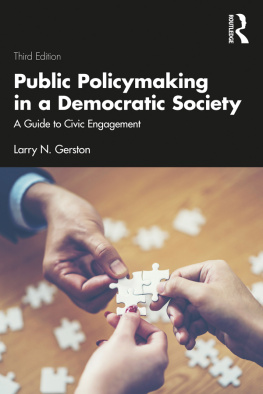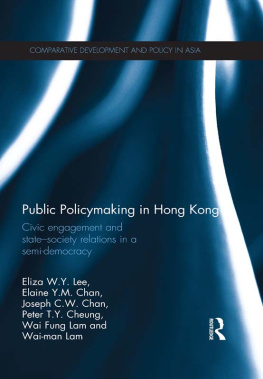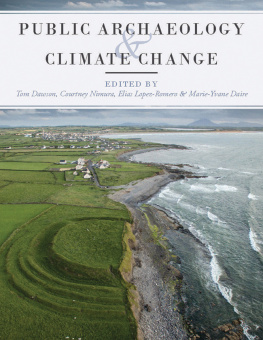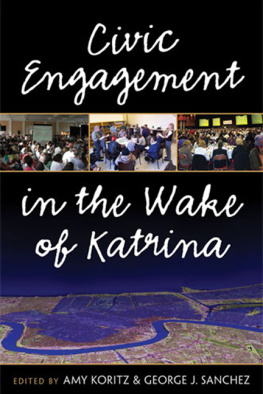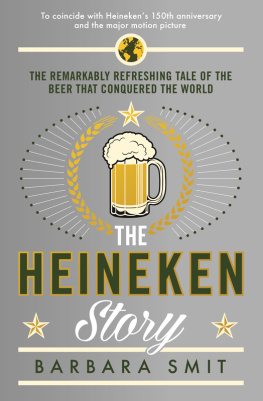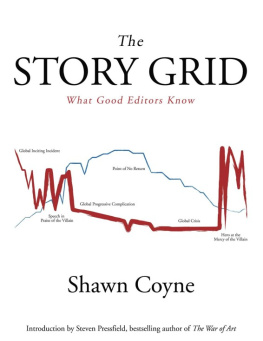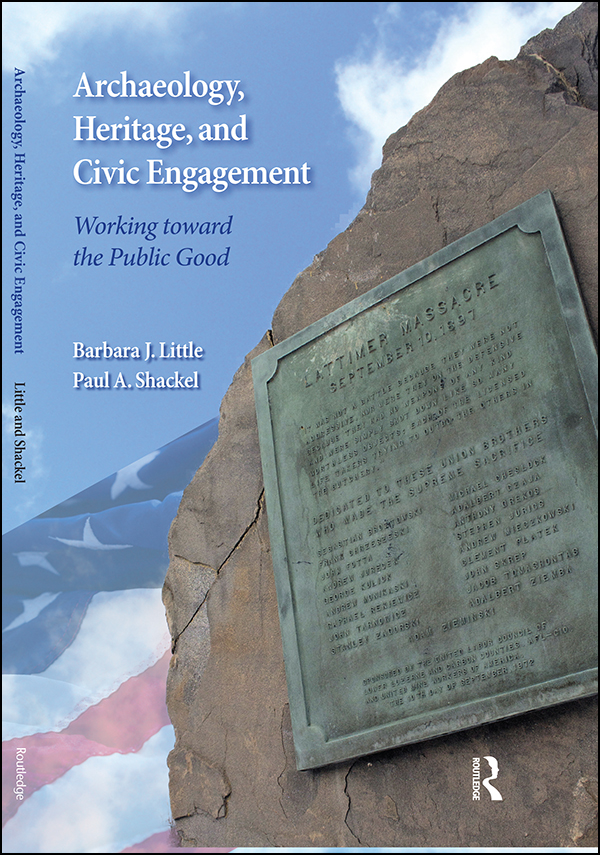Contents
Guide
Page List
Archaeology, Heritage, and Civic Engagement
Archaeology, Heritage, and Civic Engagement
Working toward the Public Good

Barbara J. Little
Paul A. Shackel

First published 2014 by Left Coast Press, Inc.
Published 2016 by Routledge
2 Park Square, Milton Park, Abingdon, Oxon OX14 4RN
711 Third Avenue, New York, NY 10017, USA
Routledge is an imprint of the Taylor & Francis Group, an informa business
Copyright 2014 Taylor & Francis
All rights reserved. No part of this book may be reprinted or reproduced or utilised in any form or by any electronic, mechanical, or other means, now known or hereafter invented, including photocopying and recording, or in any information storage or retrieval system, without permission in writing from the publishers.
Notice:
Product or corporate names may be trademarks or registered trademarks, and are used only for identification and explanation without intent to infringe.
Library of Congress Cataloging-in-Publication Data
Little, Barbara J.
Archaeology, heritage, and civic engagement : working toward the public good / Barbara J. Little, Paul A. Shackel.
pages cm
Summary: The definition of public archaeology has expanded in recent years to include archaeologists collaborations with and within communities and activities in support of education, civic renewal, peacebuilding, and social justice. Barbara Little and Paul Shackel, long-term leaders in the growth of a civically-engaged, relevant archaeology, outline a future trajectory for the field in this concise, thoughtful volume. Drawing from the archaeological study of race and labor, among other examples, the authors explore this crucial opportunity and responsibility, then point the way for the discipline to contribute to the contemporary public good-- Provided by publisher.
Includes bibliographical references and index.
ISBN 978-1-59874-637-2 (hardback) ISBN 978-1-59874-638-9 (paperback) ISBN 978-1-59874-639-6 (institutional ebook) ISBN 978-1-61132-771-7 (consumer ebook)
1. Community archaeology. 2. ArchaeologySocial aspects. 3. Cultural propertySocial aspects. 4. Common good. I. Shackel, Paul A. II. Title.
CC77.C66L57 2014
930.1--dc23
2013042900
ISBN-13: 978-1-59874-637-2 hardcover
ISBN-13: 978-1-59874-638-9 paperback
Copyediting: Susan Schmid
Design and Production: Detta Penna
Barbara J. Little is an Adjunct Professor of Anthropology and an Affiliate of the Center for Heritage Resource Studies at the University of Maryland, College Park. For twenty years she was an archaeologist with the U.S. National Park Service, where she is now the program manager for the cultural resources office of outreach. Dr. Little is particularly interested in the ways in which heritage is valued, recognized, and interpreted. She works in public archaeology on issues of public outreach and involvement, on the evaluation and official designations of archaeological places, and on the public relevance of archaeology. Her book, Historical Archaeology: Why the Past Matters (2007), was named an Outstanding Academic Title by Choice in 2008. In 2009, she delivered a lecture entitled Reintegrating Archaeology in the Service of Sustainable Culture as the Patty Jo Watson Distinguished Lecture in Archaeology at the American Anthropological Association meeting. She is the only federal archaeologist to be awarded this honor since this annual lecture was established in 1989.
Paul A. Shackel is Professor of Anthropology at the University of Maryland. His archaeology projects have focused on the role of archaeology in civic engagement activities. He co-edited a book on this topic titled Archeology as a Tool of Civic Engagement (AltaMira, 2007), with Barbara Little. He collaborated with other institutions to train undergraduates in archaeology to explore issues of race, class, and ethnicity on the Illinois western frontier at a biracial town known as New Philadelphia. Much of this work can be found in his book New Philadelphia: An Archaeology of Race in the Heartland (2011). He is currently engaged in developing a project that focuses on labor and immigration in northeastern Pennsylvania. The foundation for the project can be found in The Archaeology of American Labor and Working Class Life (2009b). His recent article with Michael Roller in the International Journal of Historical Archaeology entitled The Gilded Age Wasnt So Gilded in the Anthracite Region of Pennsylvania provides an overview of the project.


We have thought about writing this book for some time. Although we were both trained in the scientific method of the New Archaeology, we have been part of a discipline that has changed and expanded over the past few decades. While archaeology can be performed for the sake of knowledge alone, it can have more complicated applications, especially when we involve living communities. We can begin to think about the uses of the past and we can be active agents who use heritage to make the world a better placefor the public good. There are many who came before us and were brave enough to challenge the paradigms of the discipline. They made a difference by making heritage relevant to communities and addressing social justice issues. We appreciate this groundbreaking work and recognize that we stand on the shoulders of our predecessors.
Along the path to making this book a reality were many people who helped to shape how we think about heritage and archaeology. Many of these scholars are cited throughout the book. A special thank you goes to our colleagues and students for discussing some of these issues and inspiring us. Thanks also go to Mike Roller and to Adam Fracchia for their able assistance in preparing the final manuscript. We are pleased to have Kristin Sullivans photo on the cover, and extend our thanks to Susan Walters Schmid for her copyediting skills and to Detta Penna for the books design. We would also like to thank Mitch Allen for his patience as we completed this book.

Freedom.
It is difficult to invoke a concept more embedded in the imagined heritage of the United States. This one word, with its many meanings and many genealogies, is emblematic of the complexity of heritage and its uses. It is our entry point into a discussion about intersections among heritage, justice, peacebuilding, civic engagement, and the working through that people need to do to come to public judgment within a democracy.
We begin with a brief heritage story and an aspiration.



